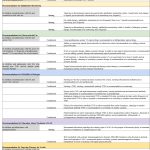
Rawpixel.com / shutterstock.com
CHICAGO—The session on the topic of pediatric uveitis at the 2018 ACR/ARHP Annual Meeting began with a presentation by Debra A. Goldstein, MD, professor of ophthalmology and director of the Uveitis Service at the Feinberg School of Medicine, Northwestern University, Chicago. To a room packed with rheumatologists, she explained, “Most of what I am going to be discussing is off label.”
Dr. Goldstein provided this introduction because very few on-label systemic therapies for uveitis exist. She supports early aggressive immunosuppressive therapy, and she pointed out that inflammatory eye disease often requires higher and/or more frequent dosing of immunosuppressive therapy than joint disease.
Anatomic Classification
Ophthalmologists classify uveitis based upon anatomy, onset and course (acute vs. chronic). The anatomic classification includes:
- Anterior uveitis, where the primary site of inflammation is the iris (iritis) or iris and ciliary body (iridocyclitis);
- Intermediate uveitis, where the primary site of inflammation is vitreous;
- Posterior uveitis, which involves inflammation of the choroid or retina; and
- Panuveitis, which includes inflammation of all three portions of the eye
Although most uveitis is noninfectious, Dr. Goldstein reminded the audience infectious causes of uveitis exist, such as toxoplasmosis, herpes, syphilis and mycobacteria. Therefore, bacterial infection, herpes and syphilis should be considered in patients with acute uveitis, especially in those with a history of recent ocular surgery or trauma, she noted.
Patient Testing
Because acute anterior uveitis is most frequently related to human leukocyte antigen B27 (HLA-B27), Dr. Goldstein advised the workup of patients with acute anterior uveitis should involve testing for HLA-B27. However, HLA-B27 is present in 6–14% of the Caucasian population and up to 4% of the African American population; therefore, indiscriminate testing for this haplotype is not helpful in patients with uveitis who do not have the classic presentation: sudden onset of pain, redness, photophobia and anterior chamber inflammation. Dr. Goldstein does, however, test all patients with acute anterior uveitis for HLA-B27, and assesses them for a clinical history/review of systems consistent with spondyloarthritis. She typically treats these patients aggressively with topical corticosteroids and refers to rheumatology those she thinks may have ankylosing spondylitis.
Dr. Goldstein discussed the case of a patient with chronic, bilateral anterior uveitis related to anti-nuclear antibody positive juvenile idiopathic arthritis (JIA). Children with chronic uveitis should not be managed with long-term topical steroids. “We need to limit local steroids in children,” she emphasized, and provided evidence for better outcomes with the early institution of systemic immunomodulatory therapy in these children. Children with undertreated chronic anterior uveitis may permanently lose visual acuity, and Dr. Goldstein noted the risk of developing uveitis in patients with JIA is not reduced if joint disease is in remission. Thus, even patients with inactive joint disease should be screened for uveitis.


